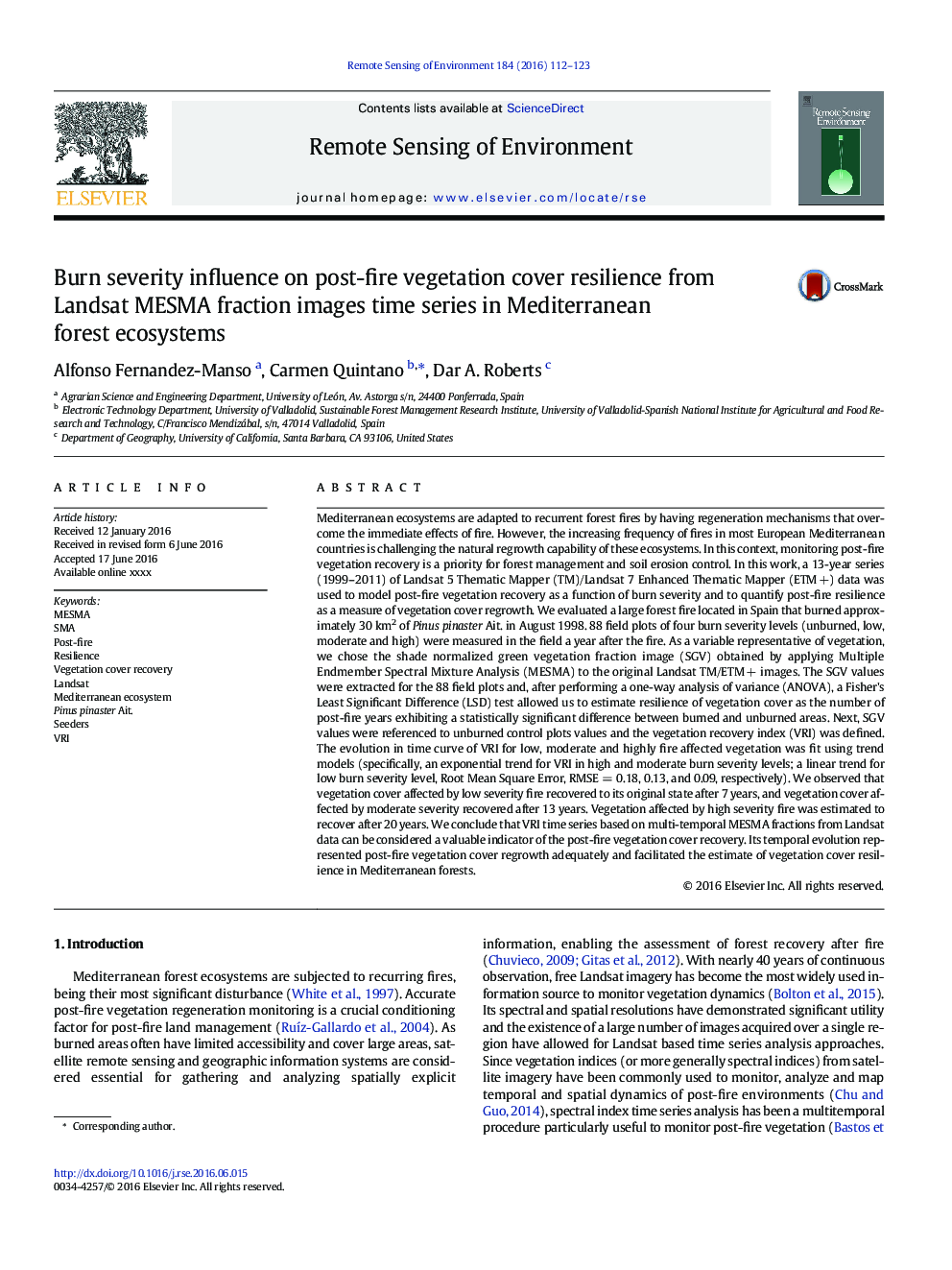| Article ID | Journal | Published Year | Pages | File Type |
|---|---|---|---|---|
| 6345223 | Remote Sensing of Environment | 2016 | 12 Pages |
Abstract
Mediterranean ecosystems are adapted to recurrent forest fires by having regeneration mechanisms that overcome the immediate effects of fire. However, the increasing frequency of fires in most European Mediterranean countries is challenging the natural regrowth capability of these ecosystems. In this context, monitoring post-fire vegetation recovery is a priority for forest management and soil erosion control. In this work, a 13-year series (1999-2011) of Landsat 5 Thematic Mapper (TM)/Landsat 7 Enhanced Thematic Mapper (ETMÂ +) data was used to model post-fire vegetation recovery as a function of burn severity and to quantify post-fire resilience as a measure of vegetation cover regrowth. We evaluated a large forest fire located in Spain that burned approximately 30Â km2 of Pinus pinaster Ait. in August 1998. 88 field plots of four burn severity levels (unburned, low, moderate and high) were measured in the field a year after the fire. As a variable representative of vegetation, we chose the shade normalized green vegetation fraction image (SGV) obtained by applying Multiple Endmember Spectral Mixture Analysis (MESMA) to the original Landsat TM/ETMÂ + images. The SGV values were extracted for the 88 field plots and, after performing a one-way analysis of variance (ANOVA), a Fisher's Least Significant Difference (LSD) test allowed us to estimate resilience of vegetation cover as the number of post-fire years exhibiting a statistically significant difference between burned and unburned areas. Next, SGV values were referenced to unburned control plots values and the vegetation recovery index (VRI) was defined. The evolution in time curve of VRI for low, moderate and highly fire affected vegetation was fit using trend models (specifically, an exponential trend for VRI in high and moderate burn severity levels; a linear trend for low burn severity level, Root Mean Square Error, RMSEÂ =Â 0.18, 0.13, and 0.09, respectively). We observed that vegetation cover affected by low severity fire recovered to its original state after 7Â years, and vegetation cover affected by moderate severity recovered after 13Â years. Vegetation affected by high severity fire was estimated to recover after 20Â years. We conclude that VRI time series based on multi-temporal MESMA fractions from Landsat data can be considered a valuable indicator of the post-fire vegetation cover recovery. Its temporal evolution represented post-fire vegetation cover regrowth adequately and facilitated the estimate of vegetation cover resilience in Mediterranean forests.
Related Topics
Physical Sciences and Engineering
Earth and Planetary Sciences
Computers in Earth Sciences
Authors
Alfonso Fernandez-Manso, Carmen Quintano, Dar A. Roberts,
